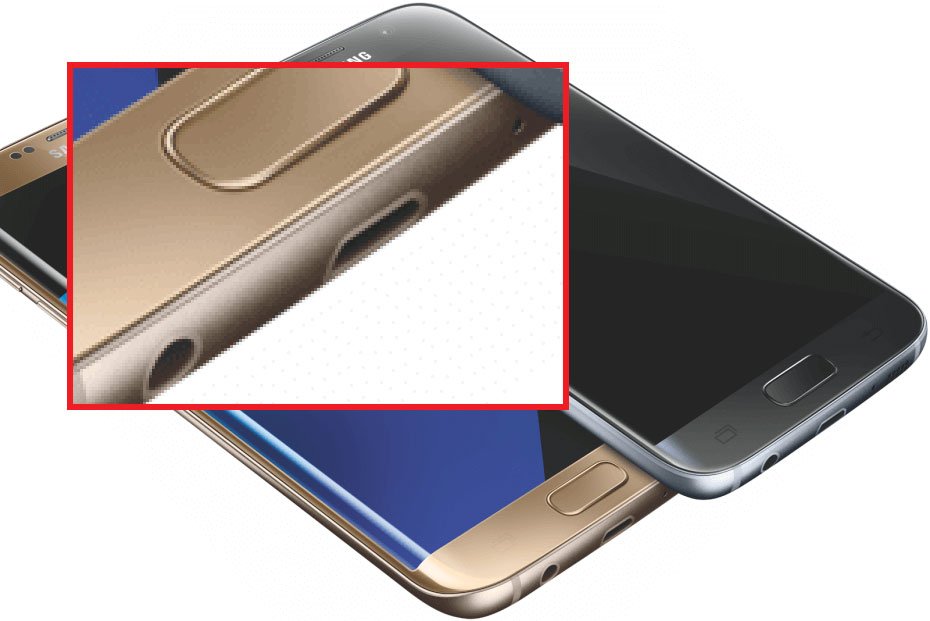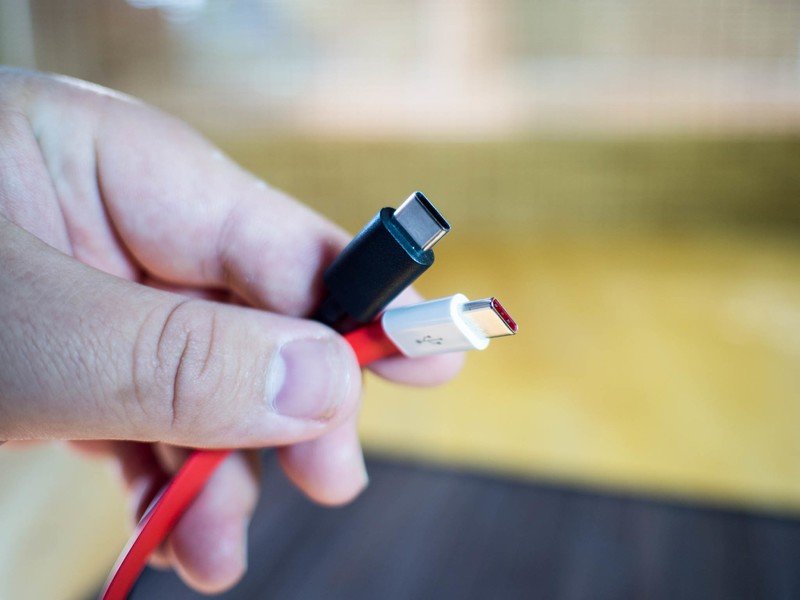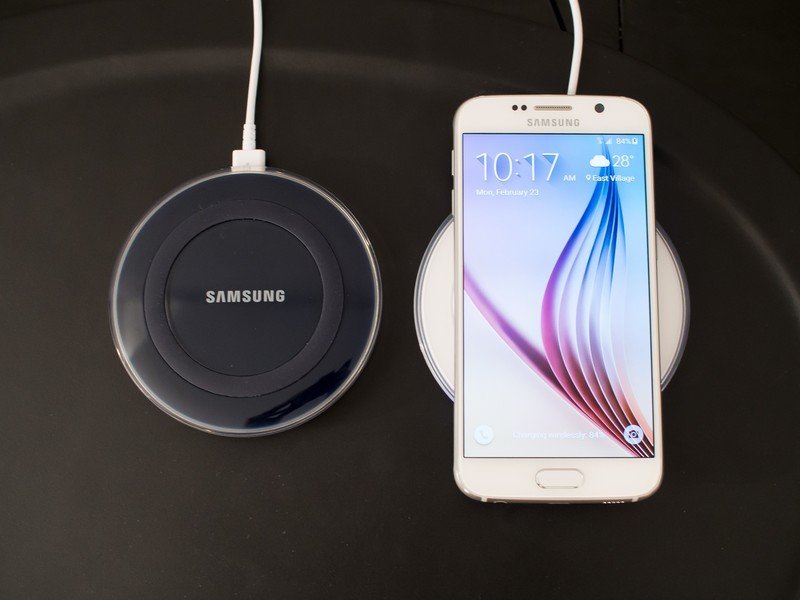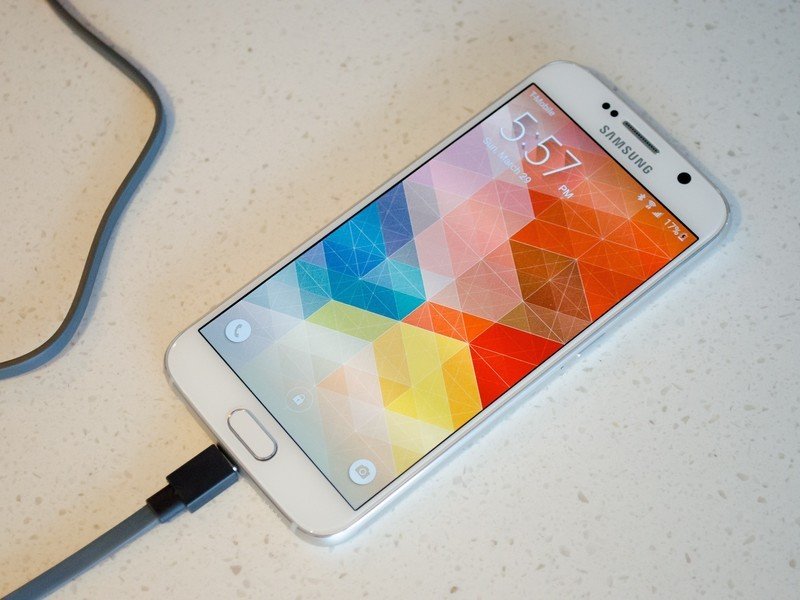Let's talk about the Samsung Galaxy S7 and its micro-USB port

The recent leakage of apparent press renders of the Samsung Galaxy S7 and S7 edge, along with corresponding hardware specs, have given us plenty to think about. Sure enough, the physical design of these two closely resembles what we've seen out of Samsung for the past 12 months. And for the first time it seems we're getting new Samsung flagships in two screen sizes — and with significantly larger batteries to address one of the GS6's biggest pain points.
However there's one hugely important detail hidden away in the bottom right corner of these Galaxy S7 renders. The Galaxy S7 and S7 edge are pictured with what appears to be a plain old micro-USB port, as opposed to the newer USB Type-C connector.

USB Type-C is the future of connecting stuff to other stuff.
That's a big deal because the reversible Type-C port is what's next. When all mobile devices and other computers eventually adopt the USB 3.1 standard — with the faster data speeds and quicker charging that entails — Type-C will be the port that enables it. We've already seen Type-C connectors in a few Android phones in recent months, most notably in forward-looking devices like Google's 2015 Nexus phones and the OnePlus 2, as well as in the Nextbit Robin. It's also used in Apple's new MacBook, Google's second-generation Chromebook Pixel and the Pixel C tablet.
Simply put, USB Type-C is the future of connecting stuff to other stuff. But it's going to be a painful, annoying transition — and that's just one of many reasons why Samsung may have decided to stick with a tried-and-true micro-USB connector in the GS7.
Let's play devil's advocate for a moment. Sure, USB Type-C is technically superior and less frustrating to plug in, as anyone who's fumbled around with the wrong end of a USB cable will appreciate. The reality of Type-C and USB 3.1 is muddy and nuanced, however. Just because something uses USB Type-C doesn't mean it's also USB 3.1.
None of the Android phones currently using the new connector really take full advantage of it.
This is why none of the Android phones currently using Type-C really take full advantage of the new connector — the OnePlus 2, Nexus 5X and Nexus 6P all use Type-C, but with USB 2.0. The only real benefits are the more convenient reversible cable, and faster charging without the need to license Qualcomm QuickCharge. (The 5X and 6P both charge at up to 5V/3A with the bundled power brick.)
MORE: What is USB Type-C?
Be an expert in 5 minutes
Get the latest news from Android Central, your trusted companion in the world of Android
It's probable we'll see Android phones that do feature USB 3.1 in 2016, but there's no guarantee that any of the Galaxy S7's immediate competitors will be among them. And in any case, the argument in favor of faster wired data transfers to a smartphone is weakened by the fact that many of us now use the cloud, not a USB cable, to get stuff on and off of our phones.
As for faster charging, Samsung already has this through its Adaptive Fast Charge capability, which is its re-badged version of Qualcomm QuickCharge 2.0. So from a purely practical point of view, Samsung isn't really missing out.


There are a lot of incentives for Samsung to stick with micro-USB — at least in the short term.
That being the case, let's look at the potential disadvantages of a fast switch to USB Type-C for the company.
The first hurdle is potential confusion from Galaxy S 3, 4, 5 and 6 upgraders who find that none of their existing cables work with their new phone. Most normal consumers aren't even aware of this new, slightly different kind of USB port. And if people will put their S Pens in the wrong way around, you can bet some of them will break a Type-C port trying to jam a micro-USB cable in there. Delaying the move to USB Type-C allows Samsung to wait for public awareness of it to grow, avoiding a wave of customer support calls in the process.
Micro-USB isn't going away anytime soon.
Samsung also has a diverse accessory ecosystem built around micro-USB, including GS6-targeted add-ons like the first-party fast charging battery and wireless chargers. It certainly wouldn't hurt to maintain accessory compatibility between the GS7 and its immediate predecessors. (As much as Samsung would probably like to sell you a bunch of new accessories as well.)
Another big consideration is Gear VR — the current version of the headset was released just two months ago with an internal micro-USB connector. A new Gear VR for a new Samsung phone wouldn't be unprecedented, but it would be a little weird for yet another SKU to launch so soon after the last one. (But that's also assuming that new phones would fit in the current Gear VR.)
Or maybe it's just not economical to switch yet. It might be as simple as a matter of money.
Again, Samsung will have to deal with the many annoyances of the jump to a new USB connector eventually, but delaying this push for a year or so means competitors will instead bear the brunt of inevitable Type-C teething issues.
Micro-USB itself isn't going away anytime soon, even after high-end phones make the switch to Type-C. Gadgets like wireless headphones, mice, keyboards, wearable gadget docks, digital cameras and storage devices all use this connector. It's going to take a long, long time — maybe a decade or more — for micro-USB's presence to start to fade.
USB Type-C is better, and it's what's next. The eventual move over to this new standard is as inevitable as the confusion that'll go along with it. In the meantime, maybe it's not such a big deal if Samsung's not chomping at the bit to bring the new port to its high-end smartphones.
What do you think of the possibility of Samsung skipping USB Type-C in the Galaxy S7? Shout out in the comments!

Alex was with Android Central for over a decade, producing written and video content for the site, and served as global Executive Editor from 2016 to 2022.
